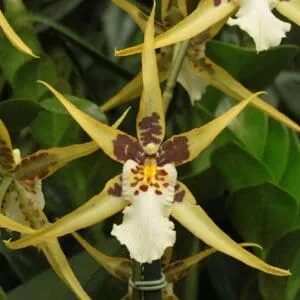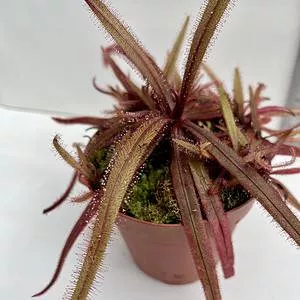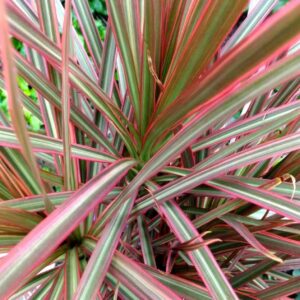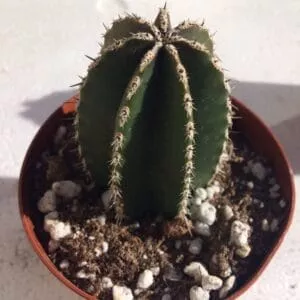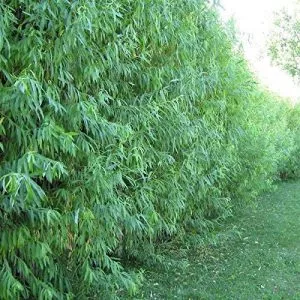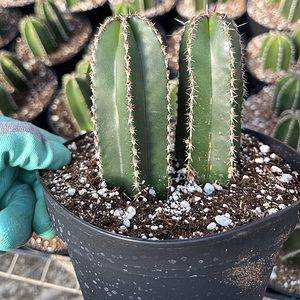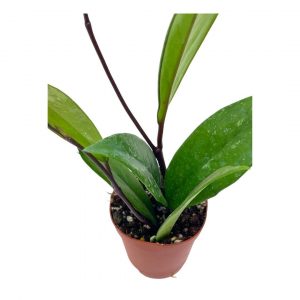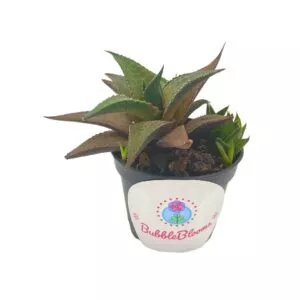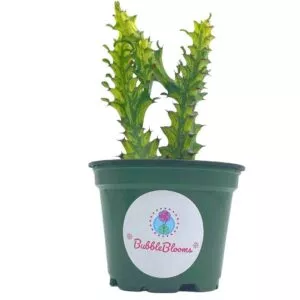No products in the cart.
Table of Contents
Ostrich ferns are deciduous ferns known for resembling ostrich feathers and can grow up to eight feet tall, with fronds emerging like fiddleheads in spring, considered a delicacy by some.
These ferns spread rapidly via underground runners and are resistant to floodwaters, making them ideal for erosion control along stream banks.
Despite their elegant appearance, they can become invasive if not managed correctly in the garden.
Key Takeaways:
Soil: Ostrich ferns thrive in moist clay soil rich in organic matter, maintaining a pH between 5 and 6.5. They require ample space to reach their mature size and can tolerate erosion with consistent moisture.
Lighting: Preferring part to full shade, ostrich ferns can tolerate full sun in cool climates but may suffer from foliage damage in warmer regions. Adequate air circulation is essential for optimal growth.
Watering: Maintain medium to wet soil conditions during summer to support fern growth, ensuring consistent moisture to prevent dormancy. Houseplants require frequent watering and high humidity levels for healthy growth.
Temperature and Humidity: Ideal temperatures range from 55°F to 80°F, with houseplants benefiting from additional humidity through misting or humidifiers. Outdoor ferns can withstand temperatures as low as -4°F with proper care.
Fertilizer: While not typically requiring fertilizer in shaded gardens, applying a balanced slow-release feed monthly from spring to summer can enhance growth if organic matter is lacking.
Pruning: Regularly remove disfigured or dead fronds in early spring to control growth and maintain plant health. Avoid pruning before winter to protect the crown and underground rhizomes.
Propagation: Propagate ostrich ferns through rhizome division in early spring, spacing plants two to three feet apart to accommodate their rapid spread. Houseplants can also be propagated through division, ensuring adequate space for growth.
Diseases and Pests: Ostrich ferns are generally resistant to deer and rabbits but may attract snails, slugs, and ostrich fern borer-moth larvae. Monitor for common issues like browning or curling leaves, yellowing due to overwatering, and stunted growth indicating insufficient sunlight.
-
Free Shipping$39.99Sold By: Aloha Hawaii Orchids
$49.99In stock
Orchid Maclellanara Yellow Star ‘Golden Gambol’ Tropical Live Plants from Hawaii
Rated 4.65 out of 5 based on 268 customer ratings02Sold By: Aloha Hawaii Orchids -
Free Shipping$15.00Sold By: Sam's Curious Cultivars
In stock
Lance Leaved Sundew, Drosera Adelae, Young Bare Root plant
Sold By: Sam's Curious Cultivars -
Free Shipping$21.99Sold By: Gar-Zen Botanical Design
Only 3 left in stock (can be backordered)
Dracaena Red Dragon Tree Ships Free.
Only 3 available and it’s in 1 people’s basketRated 4.86 out of 5 based on 49 customer ratings00Sold By: Gar-Zen Botanical Design -
$11.99Sold By: Succulent Oasis
In stock
Cactus Plant Medium Mexican Fence Post
Rated 4.84 out of 5 based on 352 customer ratings01Sold By: Succulent Oasis
More About Ostrich Fern Plants

Ostrich fern ( Matteuccia struthiopteris ) is a deciduous fern native to northern regions of Europe, Asia, and eastern North America, thriving in USDA zones 3 to 7.
Growing in colonies along stream banks, they spread via underground rhizomes and runners, potentially becoming invasive. Resistant to floodwaters, they’re suitable as border plants to prevent erosion, reaching heights of eight feet and widths of five feet.
With fertile and sterile fronds resembling ostrich feathers, they emerge as fiddleheads in spring, with fertile fronds appearing after sterile ones.
Ostrich ferns hold onto their spores throughout winter, releasing them in spring, making them suitable for warmer climates and container growth.
Ostrich Fern Care
Soil
To maintain the medium growth of this gorgeous fern, it thrives in clay soil filled with humus-rich organic matter and needs to remain moist. So whether you grow them in the garden or a container, please keep them in wet soil.
The soil pH must be around 5 and 6.5 as it is native to creekbeds and marshes. Hence, it can tolerate some erosion with a lot of moisture. Another notable thing is that it has enough space at least a few feet wide to grow to its mature size when planted.
Lighting
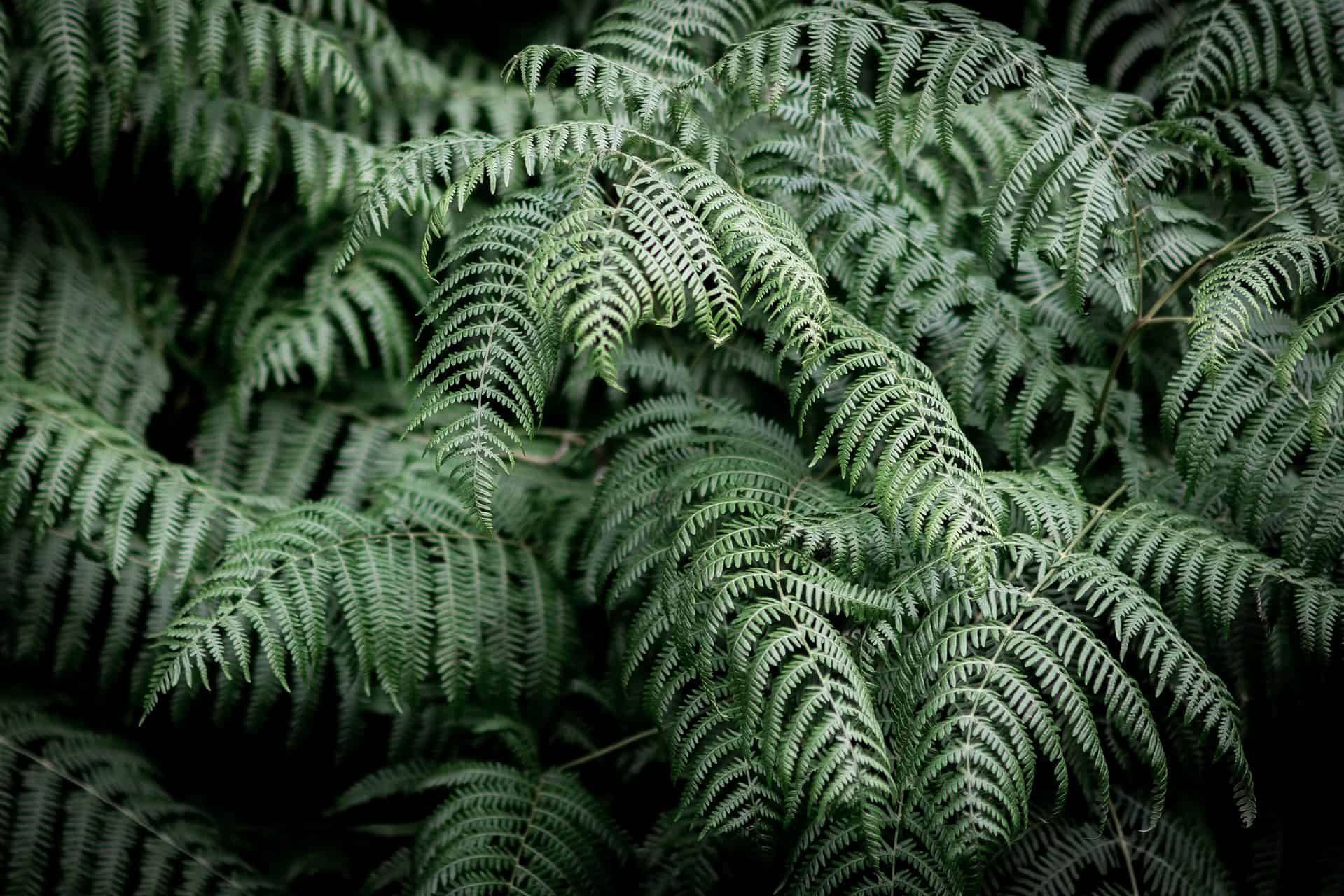
The majority of ferns grow in part to full shade. Still, an open shade with air circulation is best for these plants. When exposed to the full sun, the foliage turns yellow or gets scorched from the sun. It can stand in full sun if planted in moist soil in cool climates.
If you live in warmer climates, you may need to water your ostrich fern often.
Watering Your Ostrich Ferns
For outdoor cultivation during summer, it’s essential to sustain medium to wet conditions to prevent fronds from entering dormancy and stunting growth.
Optimal growth requires rich soil and partial shade. Conversely, indoor ostrich ferns demand ample watering and humidity to thrive.
Adjust watering techniques and frequency based on the plant’s location, ensuring proper care for both indoor and outdoor specimens.
Refer to our indoor plant watering guide for further details.
-
Free Shipping$800.00Sold By: CZ Grain
In stock
world’s fastest growing tree
Rated 4.60 out of 5 based on 156 customer ratings00Sold By: CZ Grain -
$26.99Sold By: Cacti and Exotica
In stock
6″ Pachycereus–Mexican Fence Post
Rated 4.98 out of 5 based on 59 customer ratings00Sold By: Cacti and Exotica -
$11.99Sold By: BubbleBlooms
In stock
Hoya Pubicalyx in a 2 inch pot, live rooted potted rare succulent
Rated 4.81 out of 5 based on 279 customer ratings00Sold By: BubbleBlooms -
$55.95Sold By: SunSoul Plants
$95.00In stock
Colocasia ‘Pharaoh’s Mask’ in 4″ pot
Only 2 available and it’s in 1 people’s basketRated 4.87 out of 5 based on 98 customer ratings03Sold By: SunSoul Plants
Temperature and Humidity
Ostrich ferns growing as houseplants will need high humidity, and an occasional misting helps. The fiddlehead fern can survive temperatures minus 4°F, but the ideal temperature is 55°F to 80°F.
We recommend placing a humidifier for indoor growing to keep the air moist around your indoor plant.
Fertilizer

When grown in a shade garden, it does not need fertilizers; you provide your ostrich ferns with compost.
However, if you do not add organic matter to your plant, it helps to use a balanced 20-20-20 slow-release feed once a month from early spring to summer.
Pruning Ostrich Fern
As a native plant growing in the garden, it can become an aggressive spreader, but you can keep it under control. The best way to do this is by clipping off the disfigured, dying, and dead fronds.
The best time to prune is early spring, before you see new growth or after the fronds have grown out. We recommend not trimming your ostrich fern before winter, as the fronds above protect the crown with underground rhizomes.
For potted plants, you can remove the brown and woody runners that overgrown the rim. Or you can cut your plant down to the base to reshape it. These outdoor plants make for a winter interest, adding color to the garden.
Propagation Ostrich Ferns
Unfortunately, you cannot grow an ostrich fern from the seeds as it does not have flowers. A great way to propagate your ostrich fern is by dividing the rhizomes to plant at the beginning of spring. The best method is a division, which also helps control plants’ growth.
To do this, you need a hand shovel to dig up your plant to reach the roots. Then, prepare a container with soil and compost. Next, brush the soil around the roots and divide the rhizomes in half using a sterile knife.
Choose a root section with several leaves and plant it in the pot or garden with partial sun exposure. Keep the soil moist and space your plants about two to three feet apart. As you know by now, the ostrich ferns spread fast.
Overwintering
Ostrich ferns are resilient, tolerating temperatures as low as negative four degrees Fahrenheit. In preparation for winter, trim dead fronds when they go dormant in the fall, requiring minimal additional maintenance.
With proper care, expect new growth to emerge in the following spring season.
Ostrich Fern Similar Plants
Most fern fronds start as fiddleheads, but not all are edible and must be cooked. The ostrich fern is the most common type of eating, but there are a few others you can eat if cooked well.
Polystichum munitum

The Western sword fern is another native plant to the northwestern US and is also called the king of the northwest ferns.
Athyrium filix-femina

The Lady Fern is a West Coast variety with sticky dark brown or black feathers covering the fiddleheads.
Pteridium aquilinum

The Bracken fern is not toxic to humans when cooked but is poisonous to animals as it contains a thiaminase inhibitor.
Ostrich Fern Diseases and Pests
One remarkable thing is that ostrich ferns are deer and rabbit-resistant. The ferns are not prone to many problems, with an occasional snail or slug eating them. Yet, in North America, you have the ostrich fern borer-moth larvae as it is their only food source.
You find the bore larva in the lower stem and roots. The eggs overwinter and hatch in spring, and using insecticides helps to kill the moth. Still, using insecticides creates habitat loss, threatening the insects.
One rare fungus is gangrene, which resembles black patches on the new fiddlehead fronds. The fronds become weak, breaking off at the base. The only treatment is removing the plant.
Other common problems are:
Browning or curling leaves resulting from lack of water or too much sun.
Yellowing leaves are the opposite, resulting from overwatering, and they start to droop.
Stunted growth happens when your plant needs more sun, and it is best to move it into a sunny spot but still avoid direct sun for too long.
Frequently Asked Questions
Preferably do not cut back your ostrich ferns to the ground for winter, as the crown protects the plant base and roots underground. Yet, you can do heavy pruning and trimming to make it look fresh in spring or remove dead foliage to fertile fronds in late winter.
Yes, you can remove the dead leaves to enhance new growth in your plant.
The leaves turn brown when your ostrich ferns need water, or it is standing in too much sunlight.
Ostrich ferns can grow in pots, but they require ample space and proper care to thrive. Choose a large container with good drainage, filled with rich, well-draining soil to accommodate the fern’s spreading rhizomes. Regular watering and partial shade are essential for successful container growth.
Whether you want to buy, sell, or reach out to other plant enthusiasts, Plantly is the right place to be!
-
$15.99Sold By: BubbleBlooms
In stock
Philodendron Birkin, 4 inch, White Wave, Mermaid’s Tail
Only 93 available and it’s in 1 people’s basketRated 4.81 out of 5 based on 279 customer ratings01Sold By: BubbleBlooms -
Free Shipping$18.00Sold By: Painted Petals and More
In stock (can be backordered)
HWra. Lava Burst “Puanani”
Rated 4.78 out of 5 based on 64 customer ratings00Sold By: Painted Petals and More -
$9.99Sold By: BubbleBlooms
In stock
Haworthia Venosa
Rated 4.81 out of 5 based on 279 customer ratings00Sold By: BubbleBlooms -
$29.99Sold By: BubbleBlooms
In stock
Variegated Euphorbia trigona, 4 inch pot Tricolor African Milktree, Varigated 1 stem per pot
Rated 4.81 out of 5 based on 279 customer ratings03Sold By: BubbleBlooms
